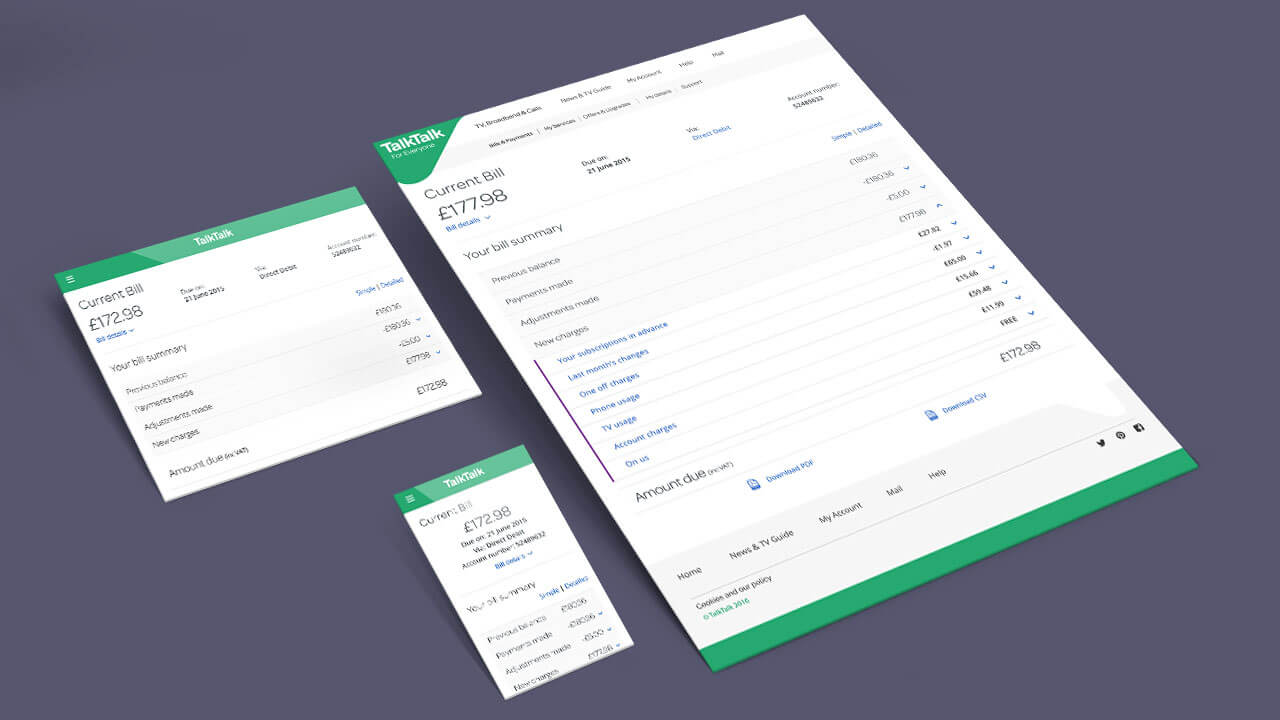

Project
TalkTalk
Role
UX/UI Designer
Responsibilities
Product Discovery
UX/UI
Wire Framing
Design
Prototyping
Customer Validation
Implementation
Timeline
2016
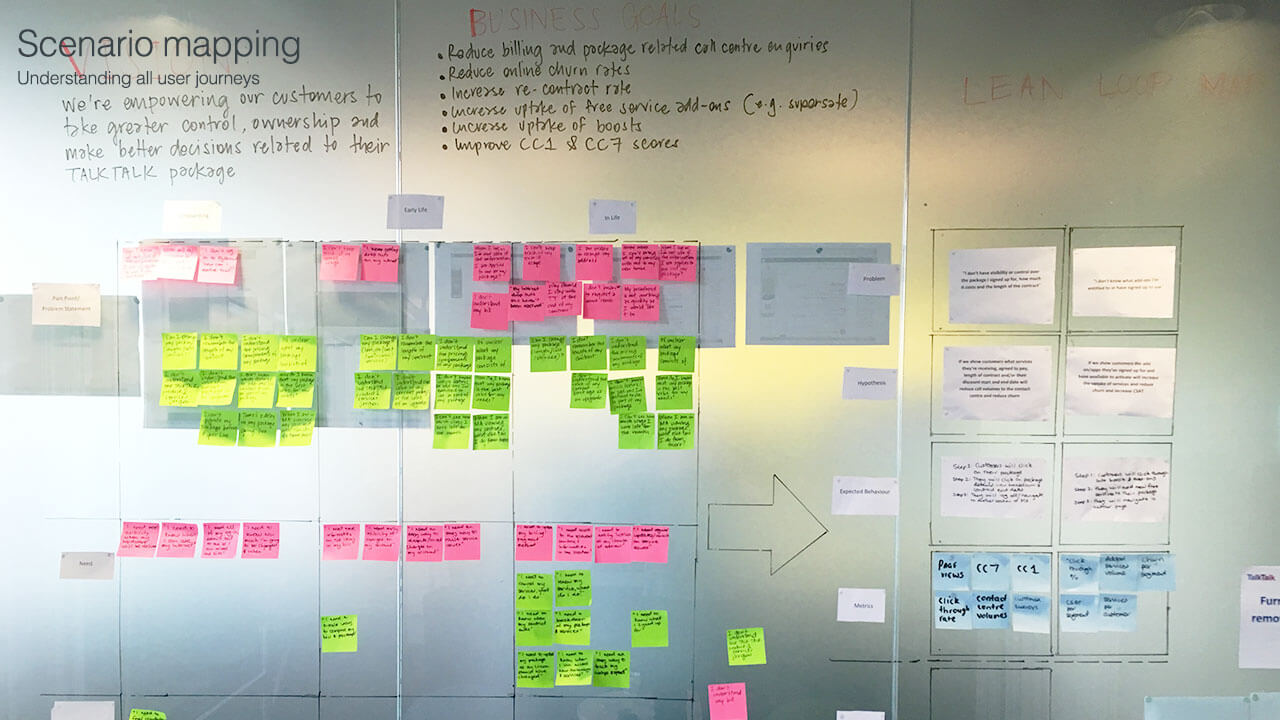
Scenario mapping sessions were held with key stakeholders, product owners, product designers (UX/UI) and developers amongst others. The process would usually involve discussing the steps a user would normally take, documenting each step and any assumptions that we might have, which can be used to prove or disprove a hypothesis for when user testing is conducted at a later stage.
Once we have a clearer idea about what the background issues are, and only then is it time to start concepting ideas and wireframing. Initially this is an iterative process which often starts off by sketching out ideas. The purpose of this process is to get ideas visualised as quickly as possible, this way we can build on stronger ideas and discard weaker ones. These will then go into development usually basic wireframes are created and then brought to life in their most basic form using prototyping software.
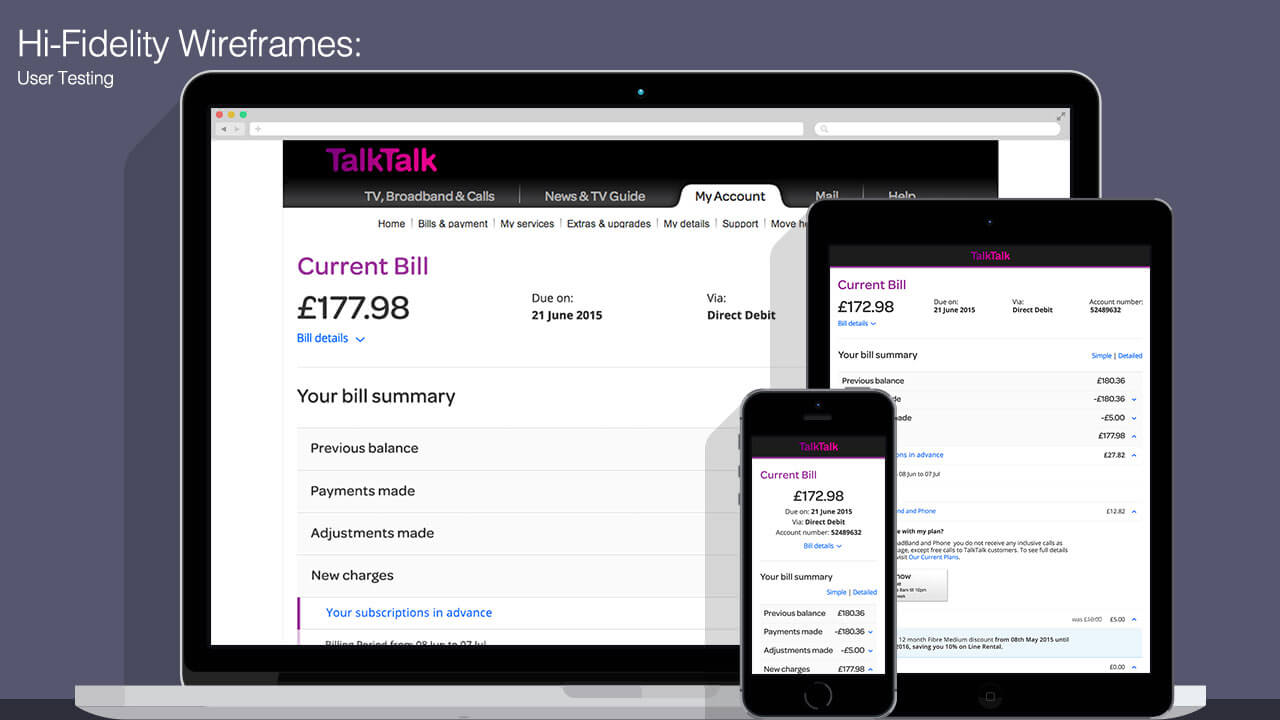
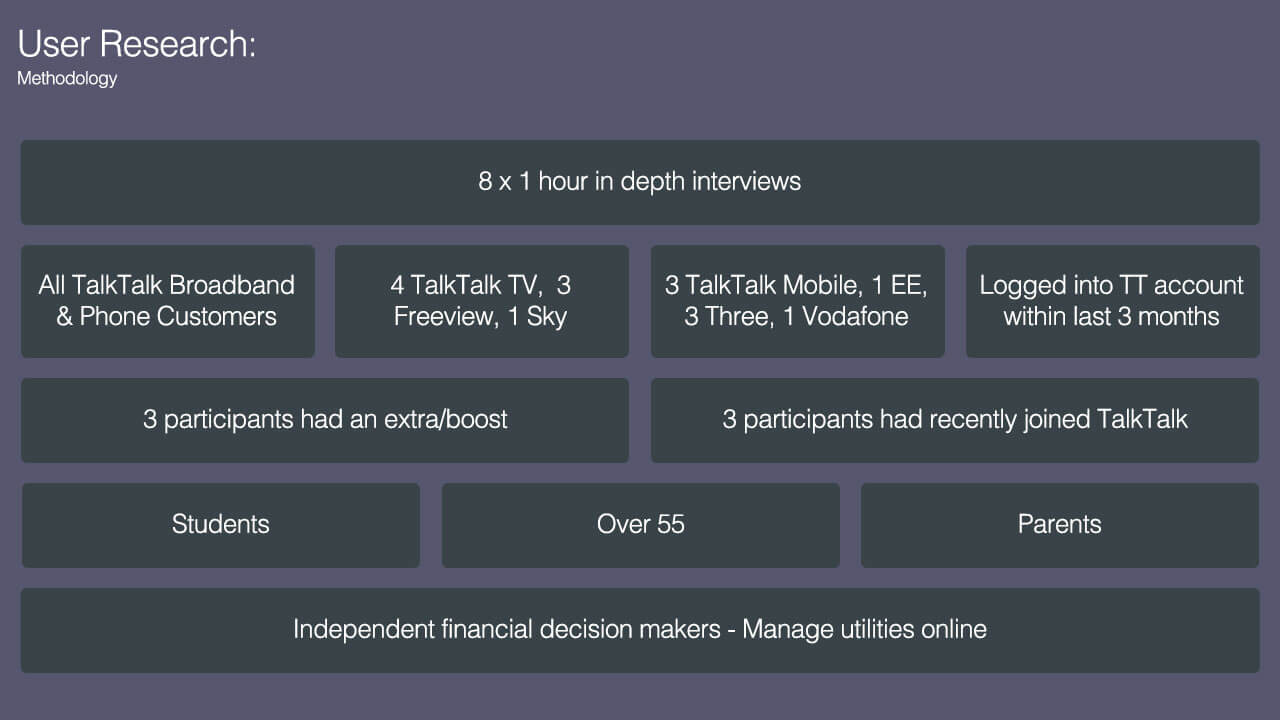
The prototypes needed to be validated using current customers to gain insights into end-user perceptions by performing realistic tasks. The tasks ranged from finding out why a bill was so large to understanding when a promotional offer would expire. These tasks would be captured by recorded interviews with a running monologue from end user.
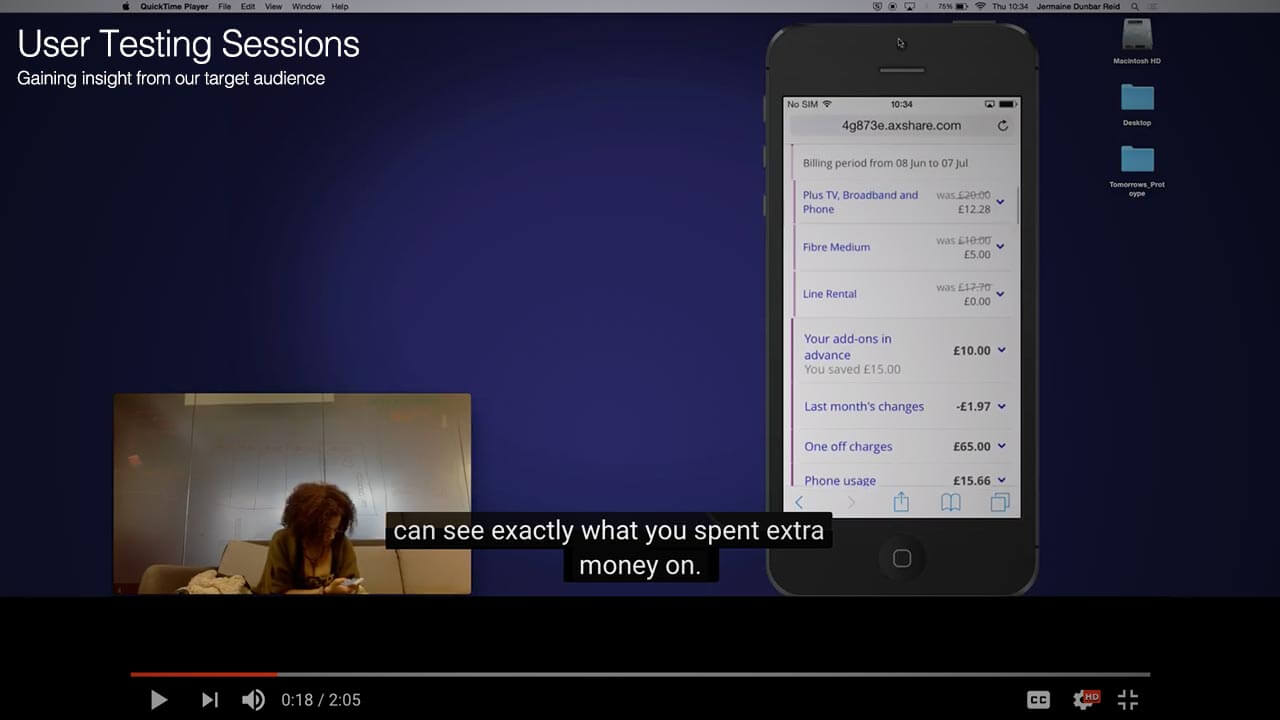
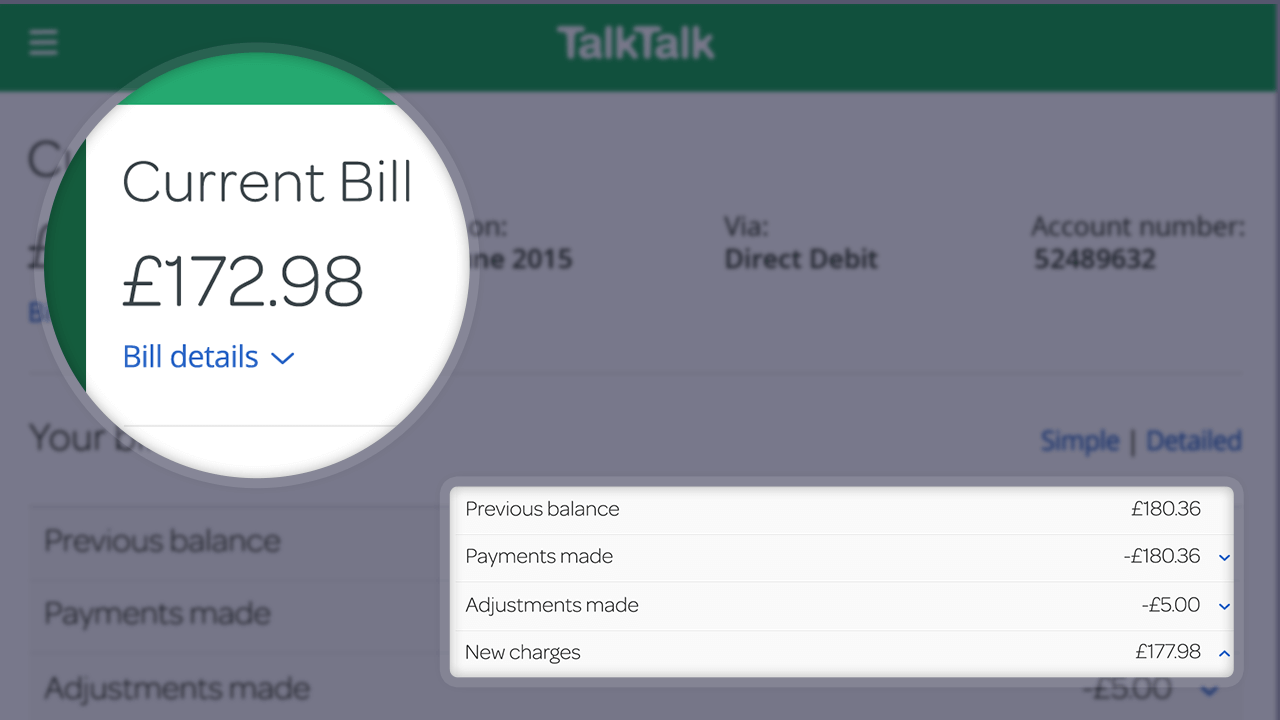
Ground up Redesign Users can view total charges or dig down to individual line items for maximum control over their bill.
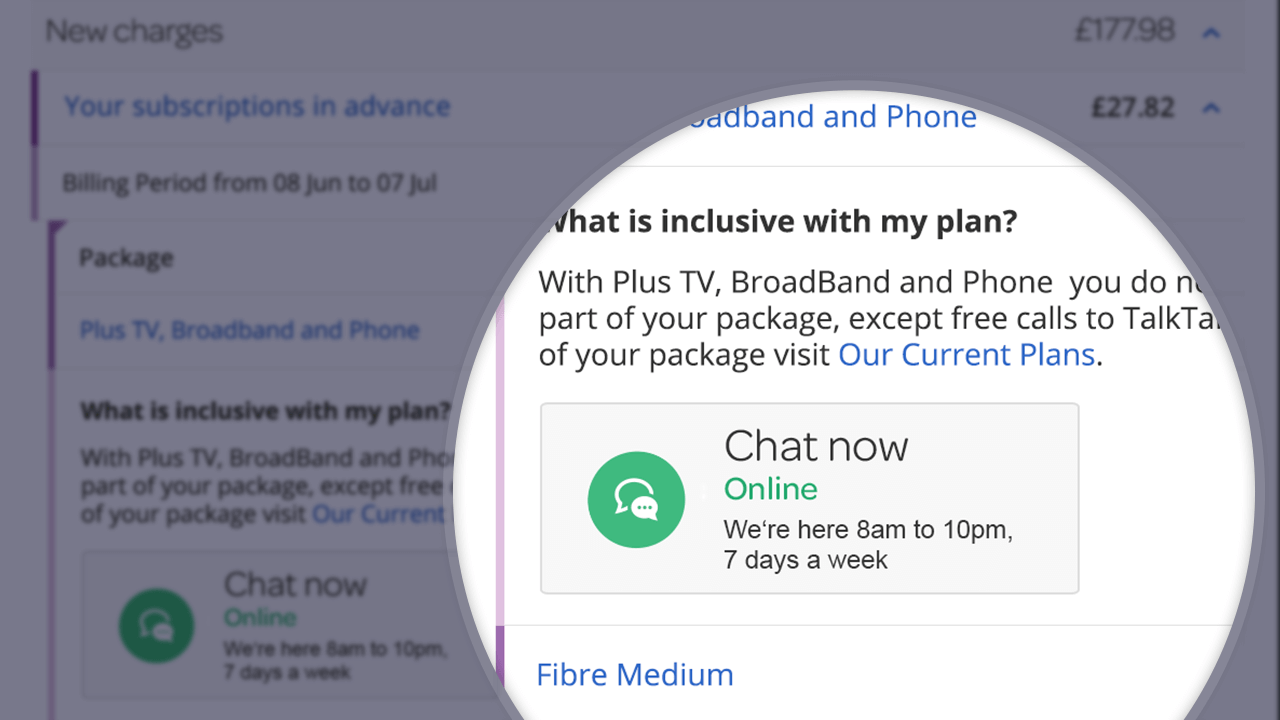
Enquiry If for some reason a customer isn't happy with a billing item charge they could query it with a member of live chat support.
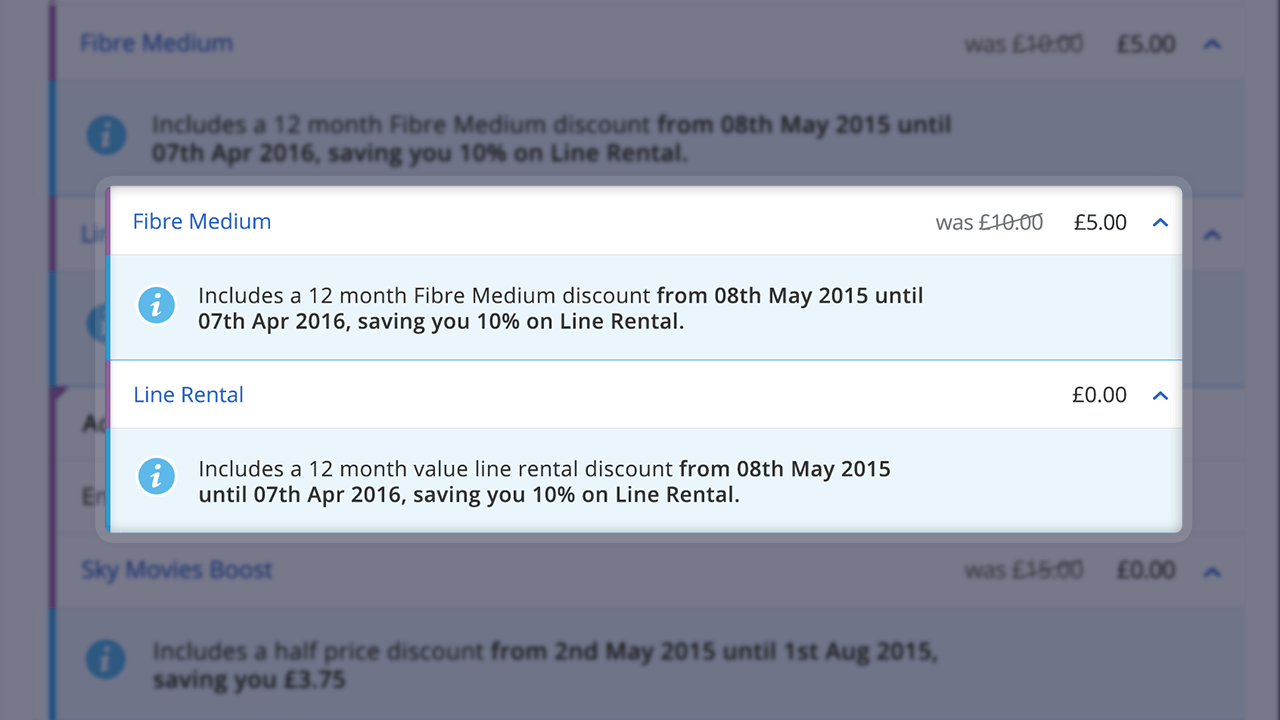
Contextual Notifications Nested within line items are notifications which give greater information about customer charges.
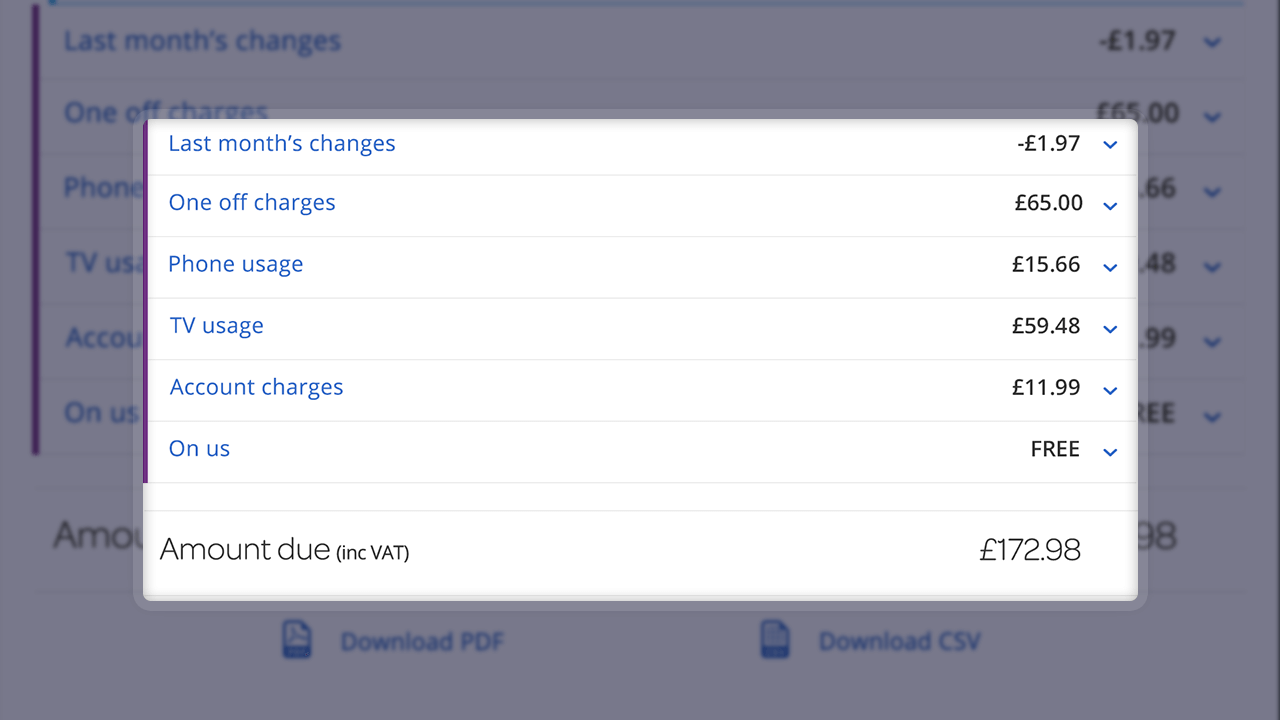
Improved Taxonomy Nested within line items are notifications which give greater information about customer charges.
